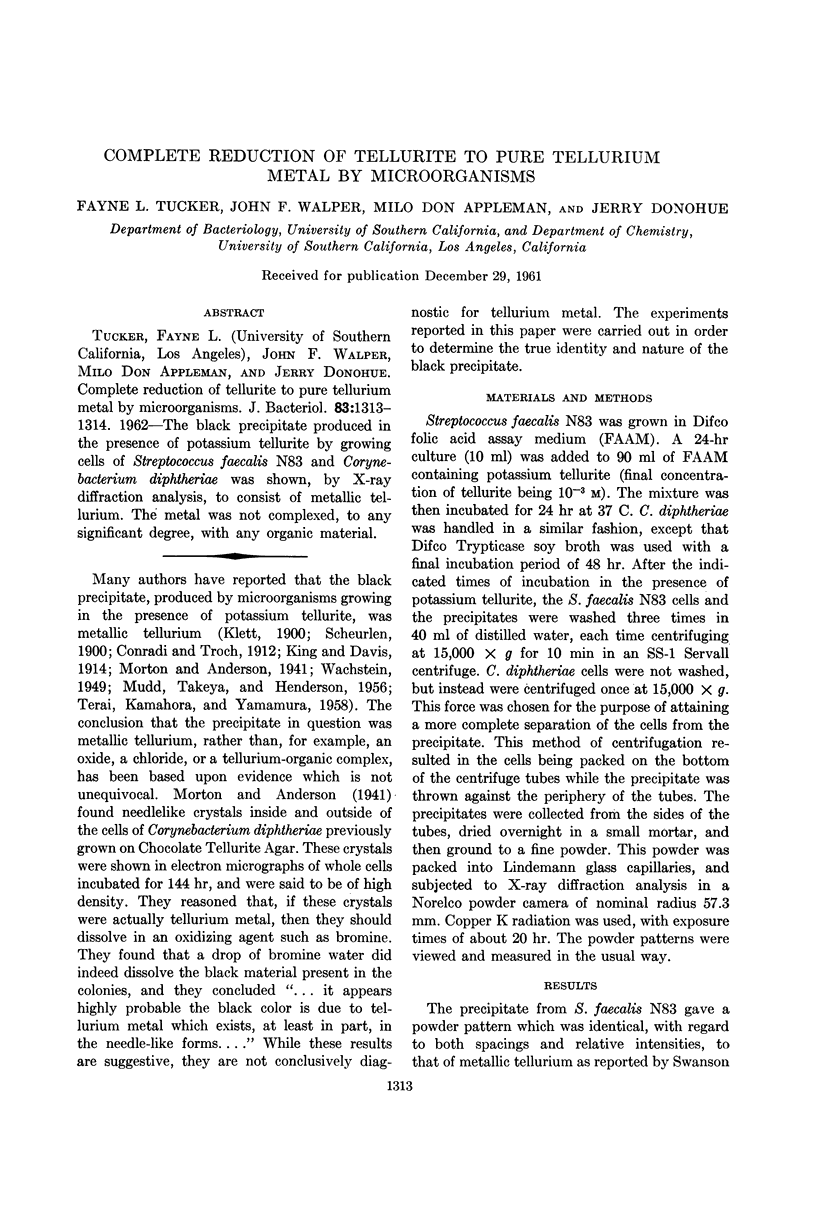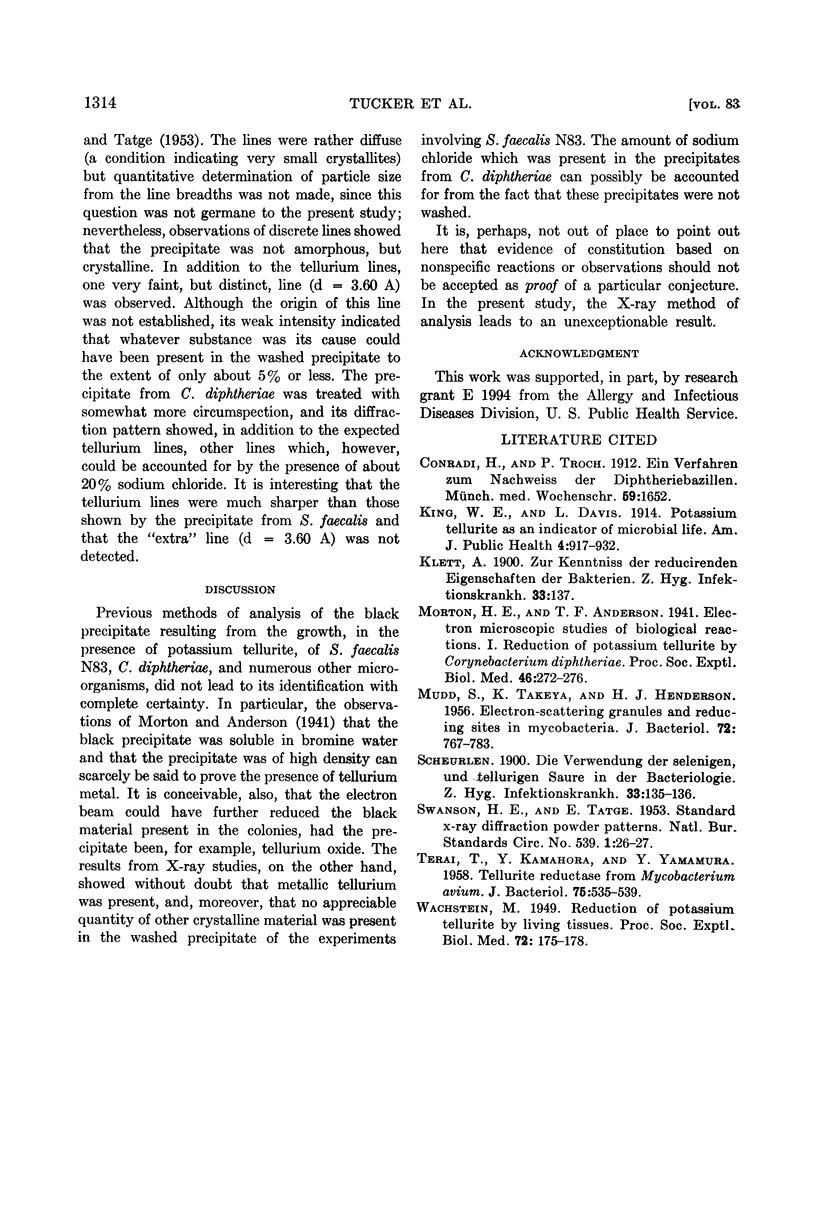Abstract
Tucker, Fayne L. (University of Southern California, Los Angeles), John F. Walper, Milo Don Appleman, and Jerry Donohue. Complete reduction of tellurite to pure tellurium metal by microorganisms. J. Bacteriol. 83:1313–1314. 1962—The black precipitate produced in the presence of potassium tellurite by growing cells of Streptococcus faecalis N83 and Corynebacterium diphtheriae was shown, by X-ray diffraction analysis, to consist of metallic tellurium. The metal was not complexed, to any significant degree, with any organic material.
Full text
PDF

Selected References
These references are in PubMed. This may not be the complete list of references from this article.
- HENDERSON H. J., MUDD S., TAKEYA K. Electron-scattering granules and reducing sites in mycobacteria. J Bacteriol. 1956 Dec;72(6):767–783. doi: 10.1128/jb.72.6.767-783.1956. [DOI] [PMC free article] [PubMed] [Google Scholar]
- King W. E., Davis L. POTASSIUM TELLURITE AS AN INDICATOR OF MICROBIAL LIFE. Am J Public Health (N Y) 1914 Oct;4(10):917–932. doi: 10.2105/ajph.4.10.917. [DOI] [PMC free article] [PubMed] [Google Scholar]
- TERAI T., KAMAHORA T., YAMAMURA Y. Tellurite reductase from Mycobacterium avium. J Bacteriol. 1958 May;75(5):535–539. doi: 10.1128/jb.75.5.535-539.1958. [DOI] [PMC free article] [PubMed] [Google Scholar]
- WACHSTEIN M. Reduction of potassium tellurite by living tissues. Proc Soc Exp Biol Med. 1949 Oct;72(1):175–178. doi: 10.3181/00379727-72-17369. [DOI] [PubMed] [Google Scholar]


